All About Floating Houses | What Are Floating Houses | Type of Floating Houses | What Is Floating Building | Floating Architecture Examples
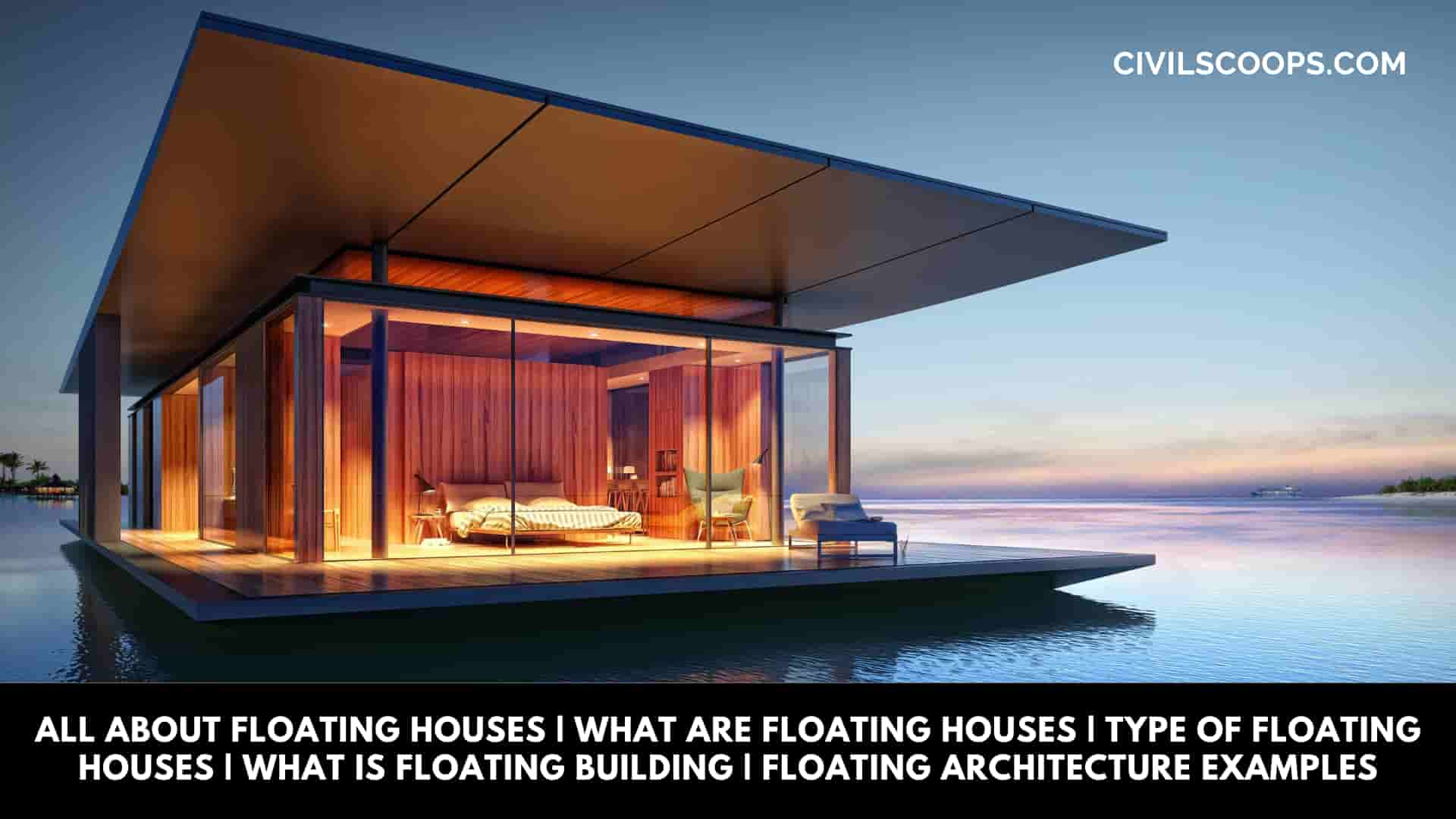
Table of Contents
What Are Floating Houses?
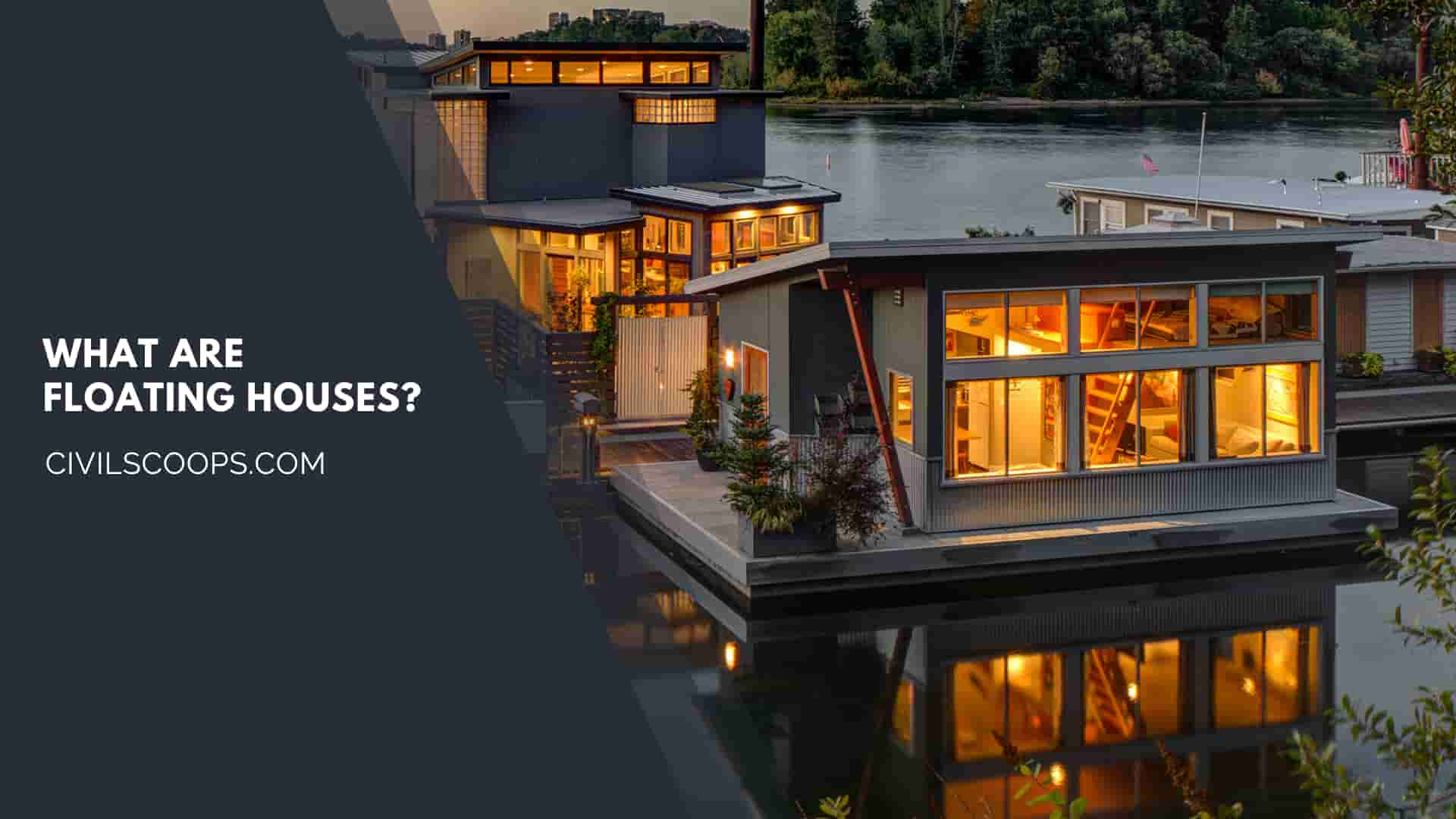
Floating house is generally a modern type of technology which is very popular in recent times. In today’s world, there are lack of free space to build a house or any type of structure because all the accessible free places are almost covered up.
To recover this problem, you need to think those problem in different ways. As the result, engineers have found an unique solution for this problem, which is floating houses. Floating houses are constructed on the wooden deck, all the other units of houses are installed after deck is placed.
Floating houses are permanently connected with electrical wirings, plumbing lines, sewer lines, etc. The weight of concrete is too heavy that’s why to reduce the weight of the whole structure engineers includes wooden particle or plywood particle for constructing the whole structure.
What Is Floating Building?
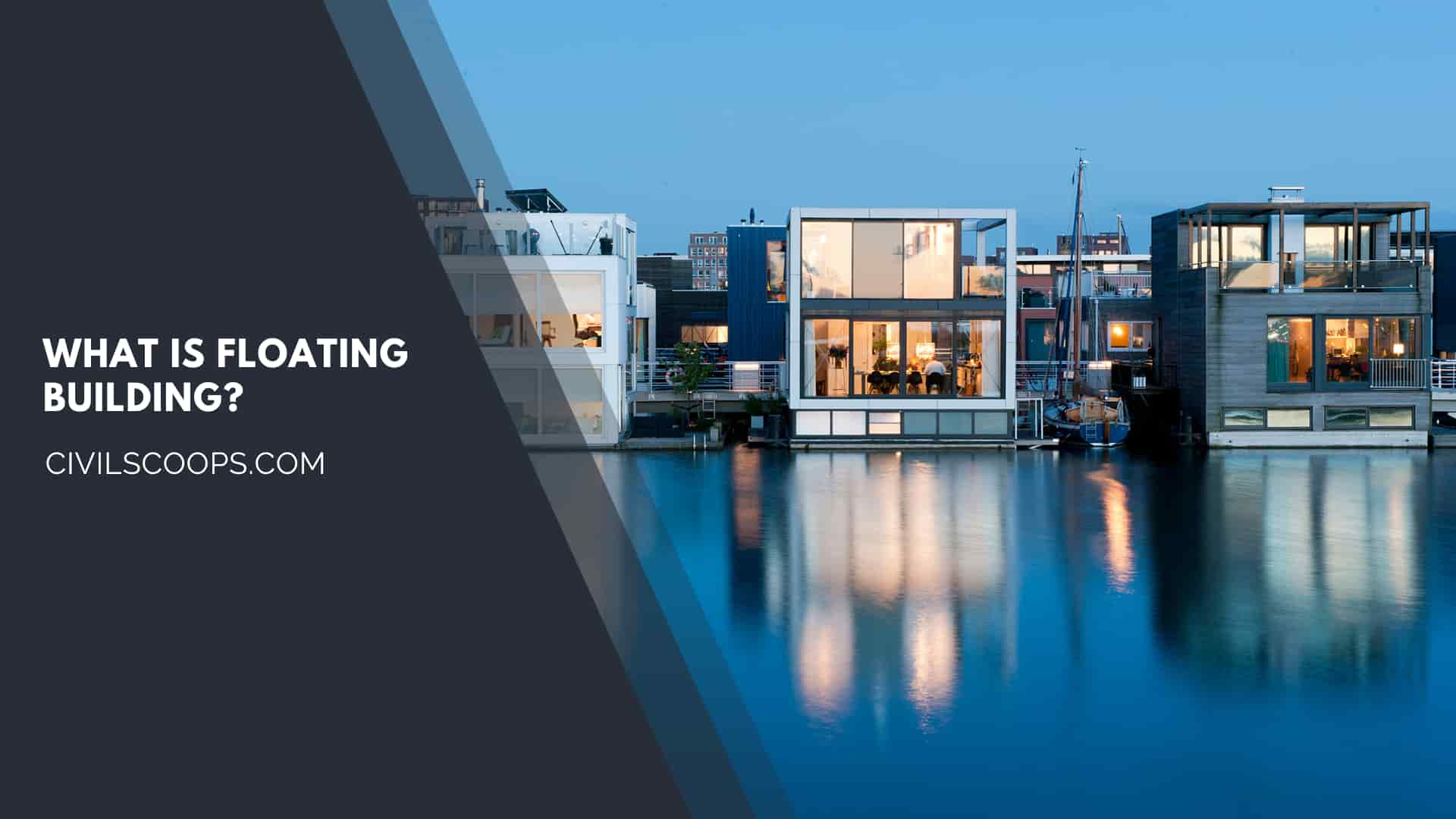
Floating house is type of house which is constructed over a floating system which allows floating the whole structure over the water.
Floating building is permanent structure which is fixed at one place and you can not navigate this from one place to another.
This type of building can not move and it is tied up with another permanent structure. Floating building is environmental friendly structure because it does not create disturbance to the sea bed or the sore of the sea and all the wastes are perfectly placed to their destination.
The cost of floating building is little bit expensive because the higher range of raw materials and the technique is also modern so it requires higher technology machineries which cost is high.
Also it requires skilled labour and labour charge is more and all over the total system is very new in our civilization, so the demand of this system is very low. That is the another reason of higher price range of this type of building structure.
Floating Architecture Examples
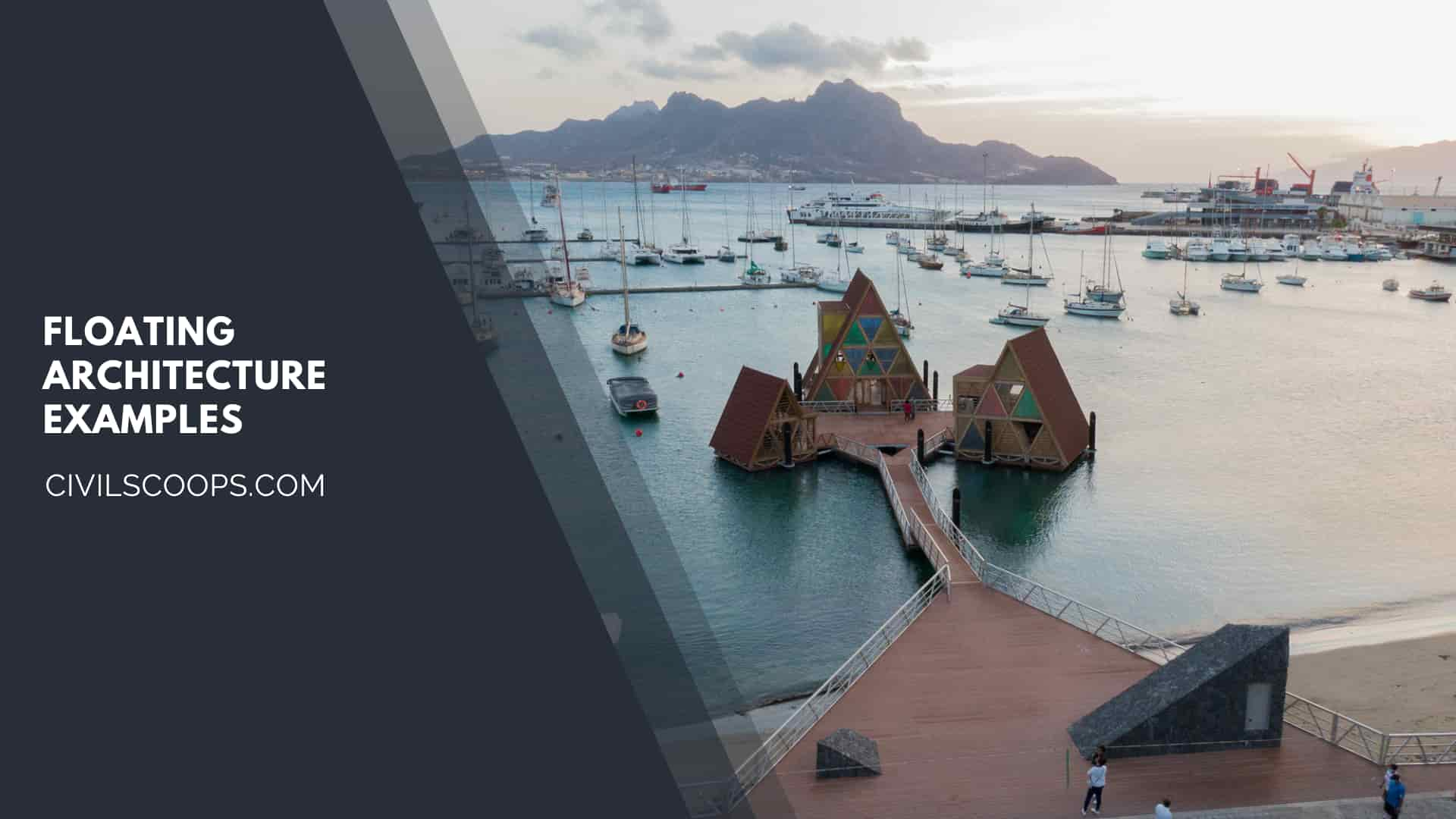
There are so many floating architectures are constructed all over the world. In all over the world there are eight milestone floating architectures are present, those are in the following-
There are so many floating architectures are constructed all over the world. In all over the world there are eight milestone floating architectures are present, those are in the following-
- Drijvend Paviljoen (Floating Pavilion): This architecture is located in the Rotterdam Nieuwe river, Netherland. This architecture is constructed by Public Domain Architecten and DeltaSync. It is made of beams which is made of steel and transparent ETFE films are used to access light in the daytime as well as at night time.
- The Exbury Egg: This is one kind of laboratory, home and workplace which Is located in the river of Beaulieu in Hampshire, England. This structure is made of cedar woods and fiberglass.
- Wa Sauna: This is the architecture which is located at the middle of the lake. This is located in Seattle’s Lake Union.
- Floating Lake Cabin: It is located at the middle of the lake and created by MOS architecture. It is generally a guest house which is made of cedar woods. It is directly accessed at the second level of the house and by modern technology, tidal impacts are resisted.
- Drie Streken: It is the floating structure which is located in the Northern Netherland and everyone comes here for feeling the beauty pf sunrise and sunset.
- Floating Island: Floating Island is located in Lake Zurich, Switzerland. It is designed by Studio Tom Emerson and 30 students. There is a swimming pool inside the island and you can also watch movies because there is also a cinema hall.
- Archipelago Cinema: This is the movie hall which is located at Kudu island, Thailand. It is one of the best movie hall in all over the world. Ole Scheeren designed the whole structure of the building.
Also Read: All About Energy-Efficient Homes
Type of Floating Houses
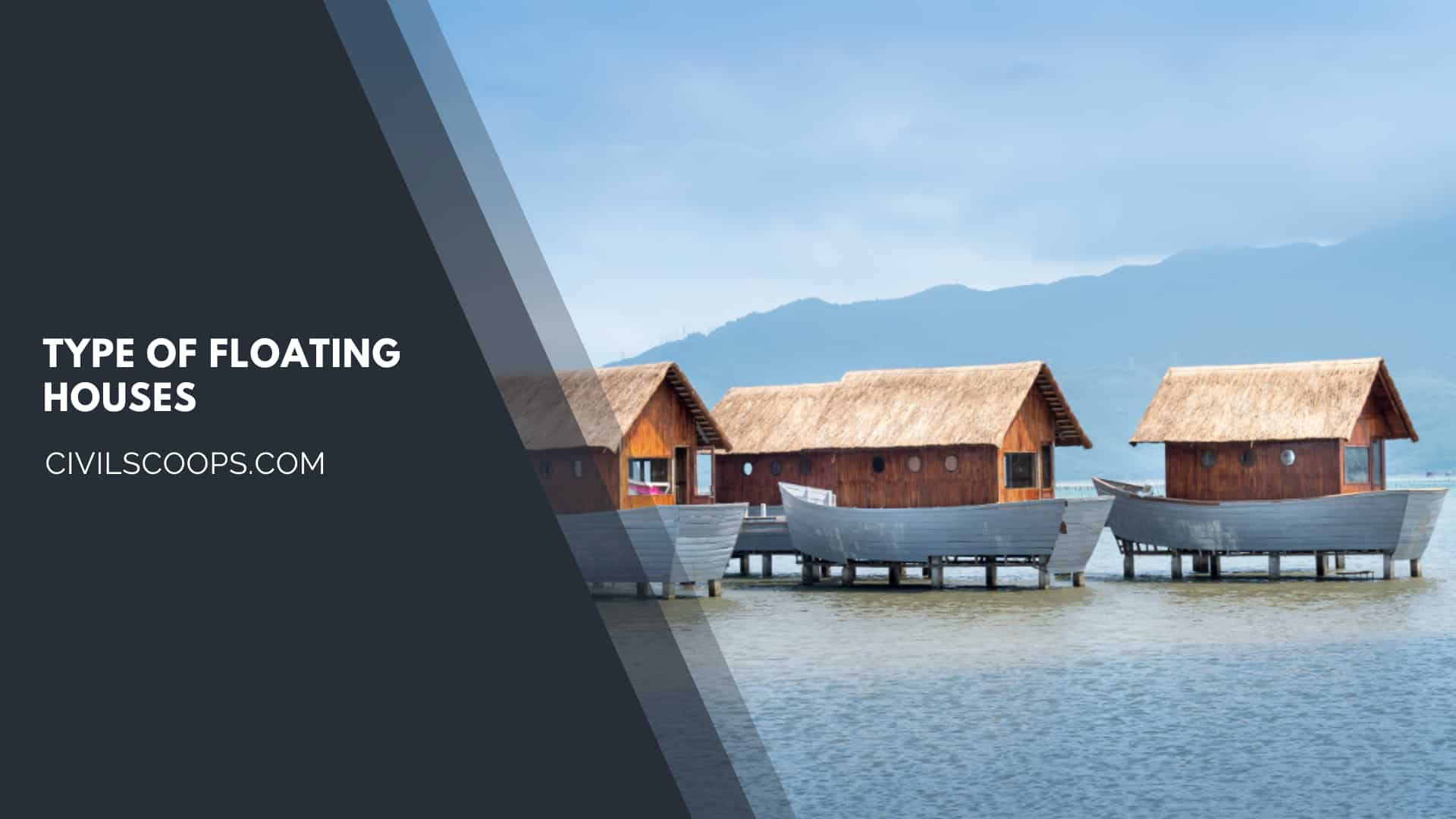
There are generally two types of floating houses, those are in the following-
1. Permanently Floating House
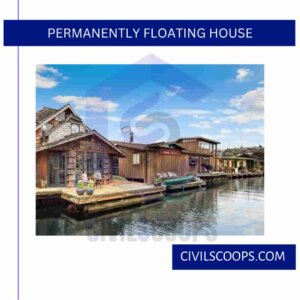
It is a type of house which floats permanently on the water surface. It is a modern technique and it requires extra construction cost.
2. House that Floats During Flood
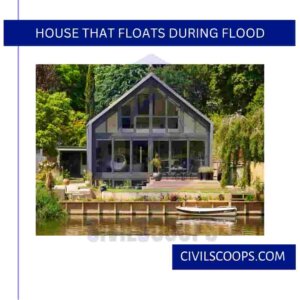
Those houses which floats during flood time and when water goes out then it will on ground. This type of house is mainly found in Kerala.
Those buildings are made of steel and the side walls are made of wood materials. Here we use steel pistons to avoid the flow of the whole building. In the time of flood the whole structure will go upward.
Example of a Floating House
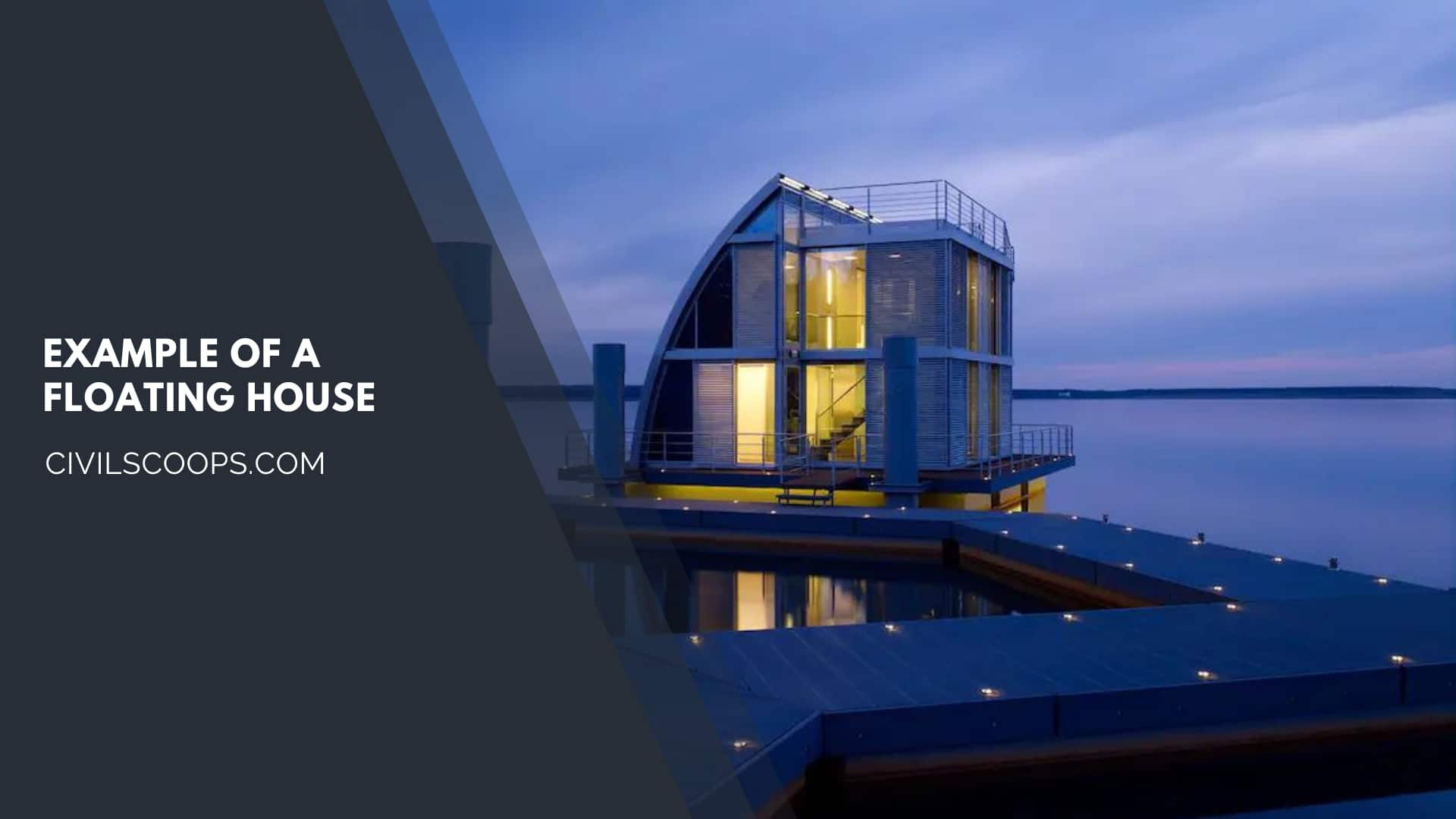
Here, the Example of a floating house are as follows:
- The floating house is a very unique and modern house. Stepping Stone House is one of the best examples of a floating house.
- Actually, the floating house is not floating, it is actually resting on the water.
- Stepping stones are used to access the water body which is around the floating floor.
- A floating house is the best and dream house for water lovers.
Also Read: What is Door Frame? | 8 Main Parts of Door Frame | Types of Door Frame used in House
Principle of a Floating House
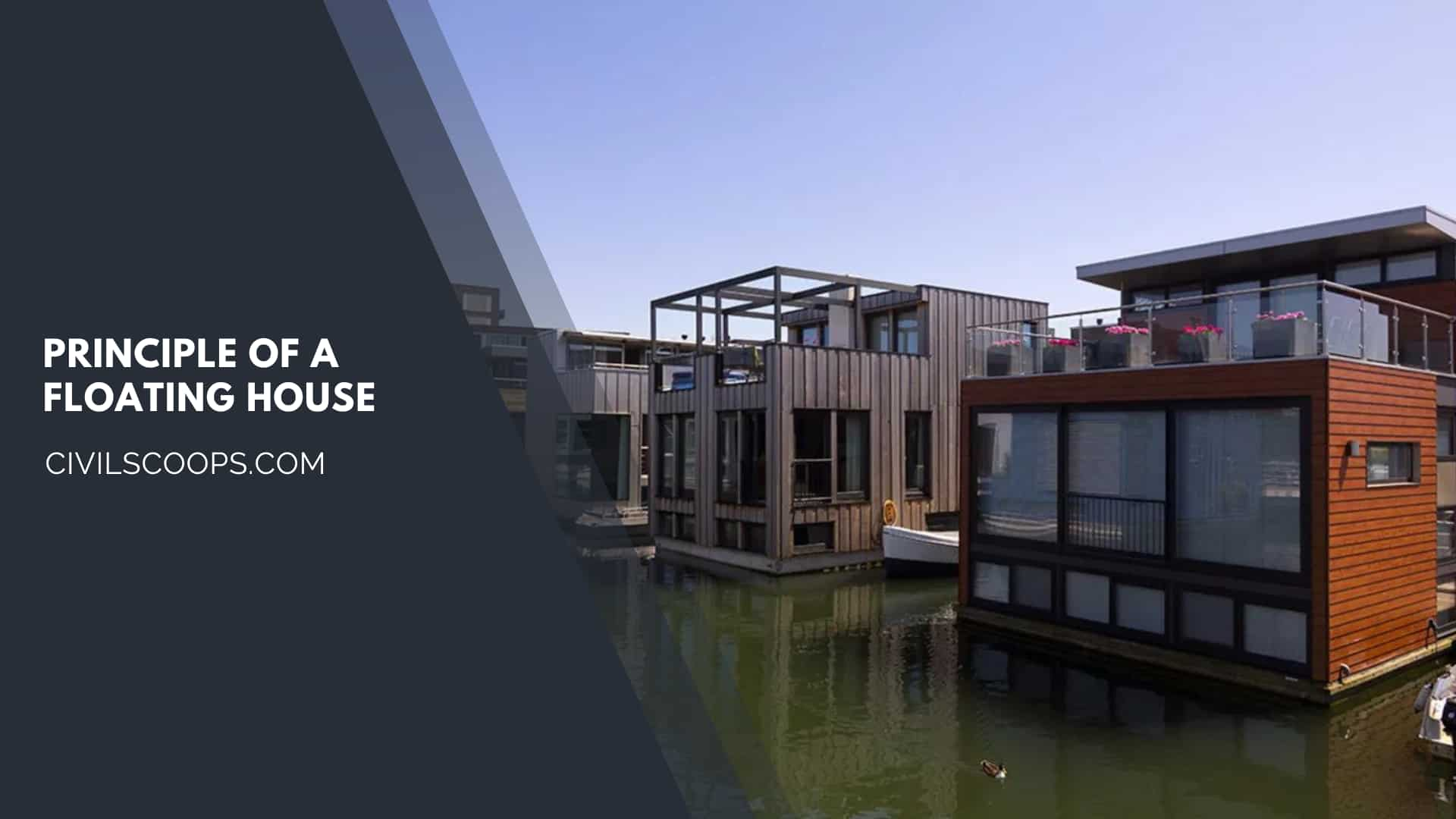
Here, the principle of a floating house are as follows:
- The main principle of floating house is to float the whole house.
- It is done by applying four steel tube support by which it can move upward or downward, it is applicable for those floating house which floats during flood time.
- The principle of other type floating house is it’s floating all time over the water surface which is applicable for permanently floating house.
[su_box title=”FAQ” style=”default” box_color=”#333333″ title_color=”#FFFFFF” radius=”3″ class=”” id=””]
What Is a Floating House Called?
Float house is a Canadian and American term for a house on a float (raft); a rough house may be called a shanty boat. In Western countries, houseboats tend to be either owned privately or rented out to holiday-goers, and on some canals in Europe, people dwell in houseboats all year round.
What Are Floating Houses?
Homes that are permanently docked on the water are called floating homes. They are berthed indefinitely, and connected to city water and sewer. Houseboats and floating architecture alike, like barges and boats, are free to roam, and dock where permitted.
How Do Floating Houses Work?
Amphibious homes are usually fastened to flexible mooring posts and rest on concrete foundations. If the water level rises, they can move upwards and float. The fastenings to the mooring posts limit the motion caused by the water.
Advantages of Floating House
The advantages of floating buildings are:
- Easy and Affordable to Transport.
- Quick Construction.
- Cost-effective.
- Reduction in Deforestation.
- Less disruption to the ecosystem.
- Pleasant Appearance.
- Not Vulnerable to earthquakes.
What Is a Floating House Number?
Floating house numbers offer a classic black painted finish. The house numbers can be mounted flush with the wall, or you can leave the mounting screws partially out of the holes for a floating number effect. No holes or unsightly screw heads are shown.
How Do Floating Homes Float?
A typical float comprises large diameter logs topped with pressure treated wood or steel beams, called stringers, which run perpendicularly across the logs and are fastened to the logs with steel pins, and, finally, pieces of floatation are placed underneath the logs to create additional buoyancy.
How Much Do Floating Homes Cost?
There is a range of costs to consider when purchasing a floating house. The first cost, the purchase price for the floating house itself, can range from as little as $35,000 to over $1 million. If you need to purchase or rent a slip in a mooring separately, that will be another cost to add to the total.
Floating Foundation Example
The floating slab is a structural foundation of structures having a lightweight load comparatively. For example, the weight of the brick wall in a single-story building can be born by these types of foundations.
[/su_box]
[su_note note_color=”#F2F2F2 ” text_color=”#333333″ radius=”3″ class=”” id=””]
Like this post? Share it with your friends!
Suggested Read –
- 36 Different Types of Plumbing Valve
- What Is Bitumen and Bitumens Types
- What Is Calacatta Quartz | 12 Types of Calacatta Quartz
- What Is Pitched Roof | 8 Types of Pitched Roof | Advantages of Pitched Roof
- What Is Sewage Pump | Types of Sewage Pump | Advantages and Disadvantages of Sewage Pump
[/su_note]
